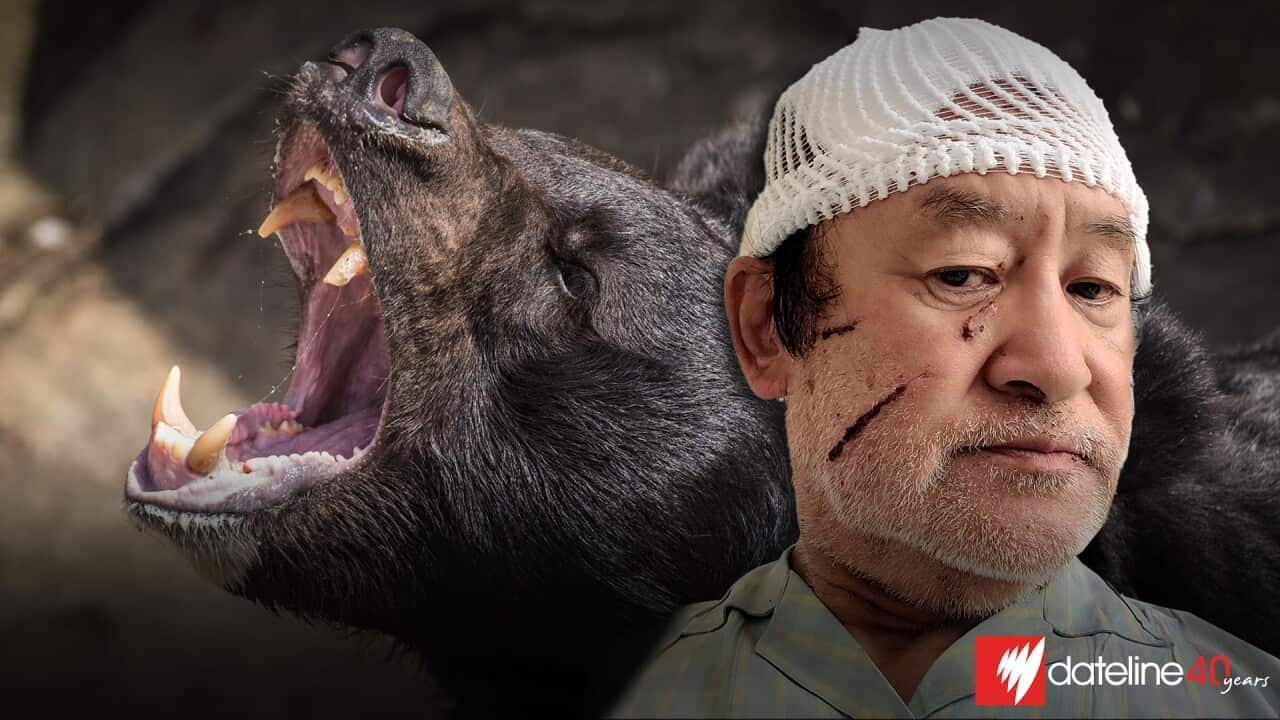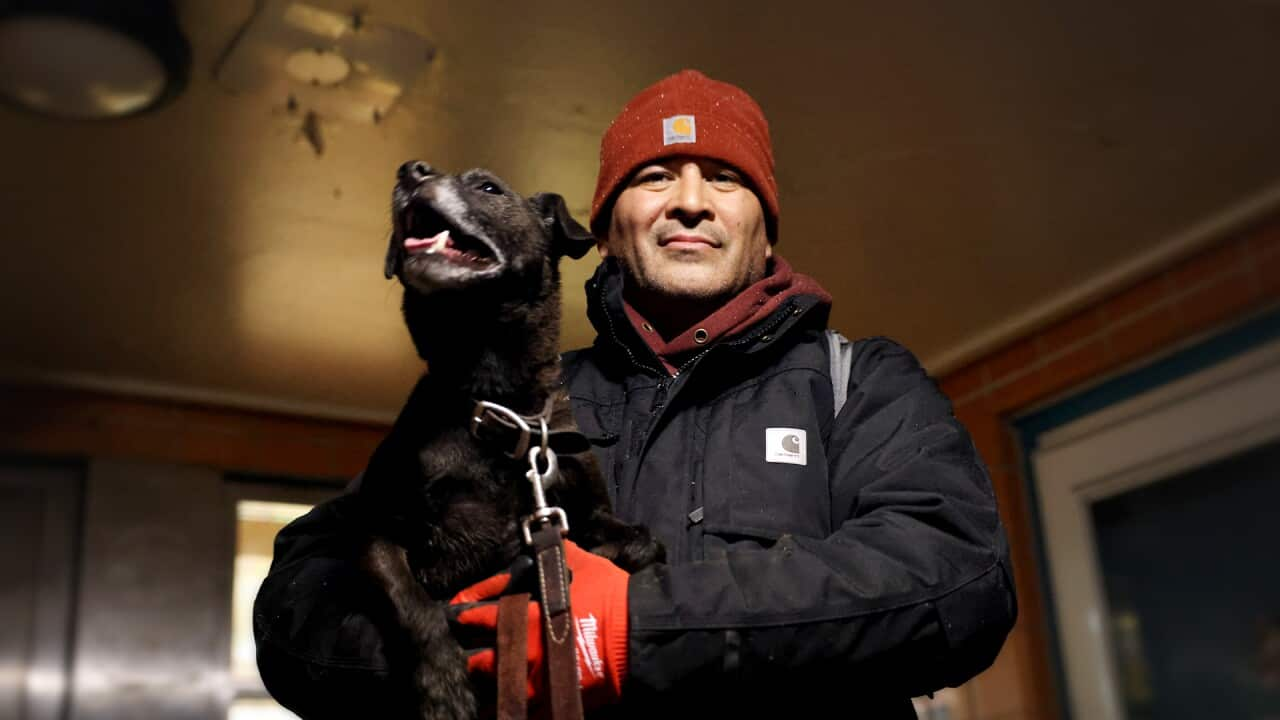Stream free On Demand

Bears Gone Wild
episode • Dateline • Current Affairs • 29m
episode • Dateline • Current Affairs • 29m
On 18 October 2023, in Kita-Akita, a regional city 700km north of Tokyo, local candy store owner Keiji Minatoya was starting his day when a young woman came running from his backyard screaming: "There's a bear!"
"I’d lived here for many decades but never seen a bear inside town," 66-year-old Minatoya thought and went back inside to continue working on making his butter mochi (a sweet treat).
But when he finished work for the day and opened his garage door, he found himself face-to-face with an Asiatic black bear.
Staring into the eyes of the 1.8m tall animal, Minatoya's survival instinct kicked in. He ran as fast as he could, but the bear caught up to him and pinned him to the ground before clawing at his face and body.
"I thought I was going to die," Minatoya recalled. "The attack was vicious, so fast, so powerful — it was terrifying."
Then suddenly the bear stopped its attack, and Minatoya was able to get into his house and call for help.
On the same day, a record six people were attacked in Kita-Akita, sending shockwaves across the country. Most frightening of all was that these attacks were not isolated incidents.

Keiji Minatoya needed stitches in his head after a bear attack in October 2023. Source: SBS / Dateline
The alarming rate of attacks has authorities scrambling to find solutions to keep communities safe.
Why bear attacks are on the rise
Professor Koji Yamazaki from the Tokyo University of Agriculture and Technology is one of Japan’s leading experts on bears. His team has been tasked by the government with determining why there were so many attacks in 2023.
He says unseasonably high temperatures in autumn last year caused a dramatic decrease in the harvest of the acorns and fruits that bears need to survive in winter.
"With bears, usually the most vital time of year is September. It is a very important period when they consume a lot of food to accumulate their body fat before hibernation," Yamazaki explained.
Desperate and starving, bears travelled unusually close to towns and villages in search of food.
"If bears eat food scraps that are left near human dwellings, they come back."
"Bears also want an easy life like humans. Once they learn an easy way, they won’t give it up."

A Japanese black bear is a subspecies of Asiatic black bear Source: Getty / Petesphotography/iStockphoto
The Japanese term 'satoyama' refers to areas between mountains and arable flatlands, traditionally used for rice cultivation and forestry. But as more people abandoned agricultural practices and moved away, it has become easier for bears to come closer to villages and towns.
"Mountainous regions, in particular, have seen progressive depopulation and aging population. As a result, bears have more space for their activities," Yamazaki said.
How is the Japanese government responding to the bear attacks?
As the borders between humans and bears blur, the Japanese government has responded by launching a nationwide bear safety program.
From public safety videos teaching people how to survive bear attacks to utilising AI technology to monitor bears’ movement patterns, Japan has committed to a variety of measures to inform and keep citizens safe.
However, one of the more controversial courses of action is the Japanese government’s new mass culling campaign.
In April this year, black bears were placed on the animals designated for control list in the Akita prefecture, meaning hunters can kill bears without restriction and for a bounty. The government has also introduced subsidised ammunition and carcass removal for bear hunters.
While the initiative has been welcomed in towns like Kita-Akita, where bear encounters have become particularly common, other communities are searching for solutions that embrace humans and the natural world living in harmony together.

Dog handler Junpei Tanaka and his Karelian Bear Dog Tama Source: SBS / Dateline
First developed at the Wind River Bear Institute in the United States, the bear dog program aims to make bears afraid of humans by tracking bear movements and when they get close to human dwellings use the dogs to chase the bear away by barking.
"Because humans and bears live so close, in order to coexist, we need to separate our respective territories," said dog handler Junpei Tanaka.
Tanaka works with Tama, his Karelian Bear Dog, a breed native to Finland known for its ability to hunt brown bears.
"With the help of dogs, we teach bears that humans are dangerous so that the bears that live here stay away from humans."
Since the program’s launch in 2004, it has reported an extraordinary reduction in the damages and incidents involving bears. There have been no bear attacks in town for over a decade, according to Amelia Hiorns, a researcher from Picchio.

Amelia Hiorns, a researcher at the Picchio Wildlife Research Center, says the bear dog program has been successful inr reducing the number of bear incidents. Source: SBS / Dateline
"We have to accept the bears as much as we can. And obviously [bears] have to accept humans to an extent as well.
"Then I think it is possible to coexist. It's not necessarily going to ever be like perfect harmony, more of a compromise. And that's probably the best way we can do it," she said.













